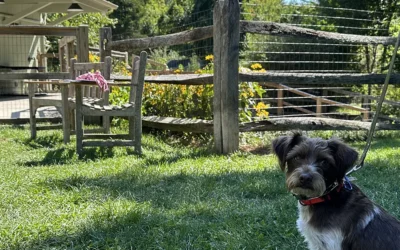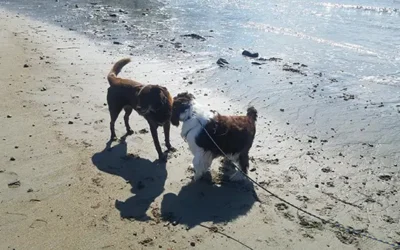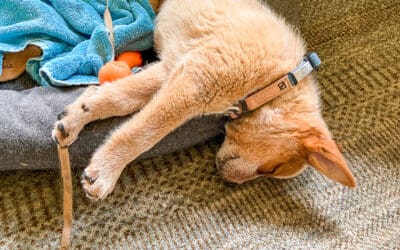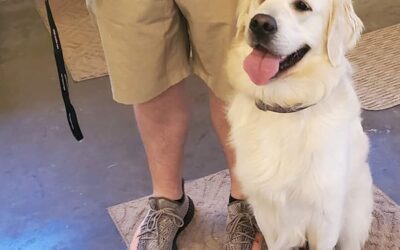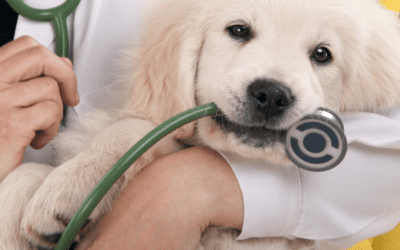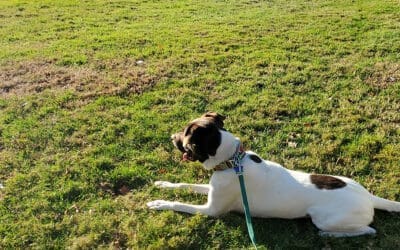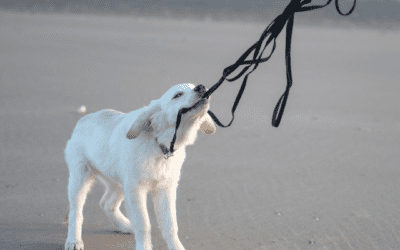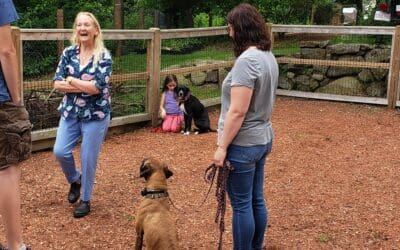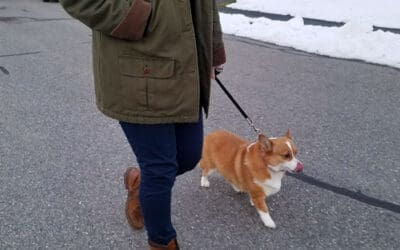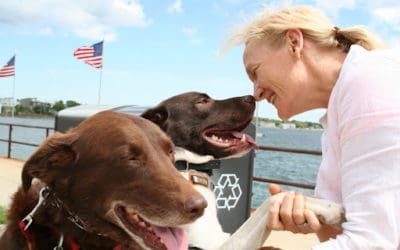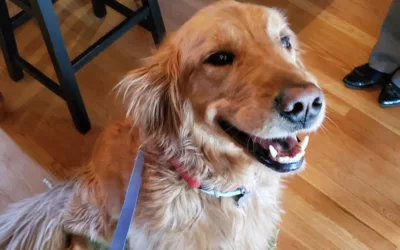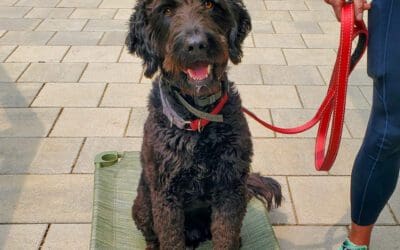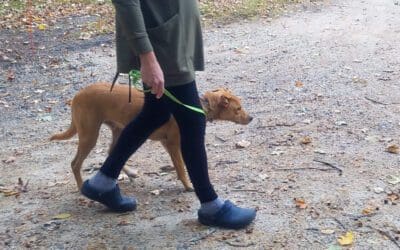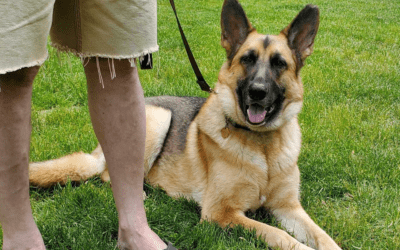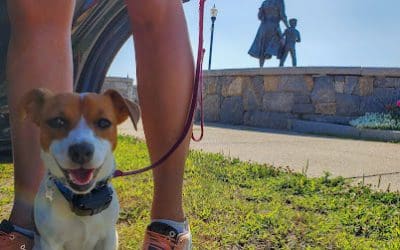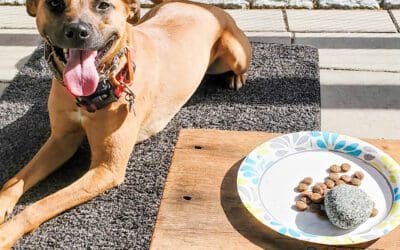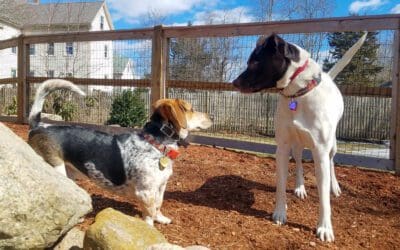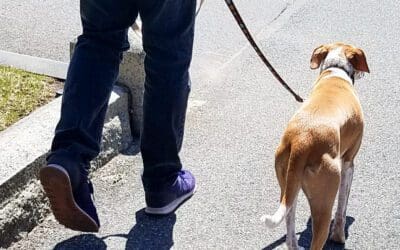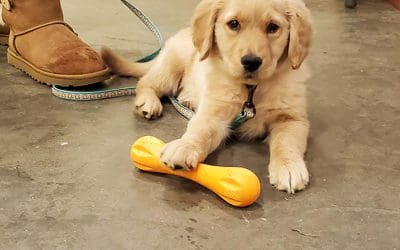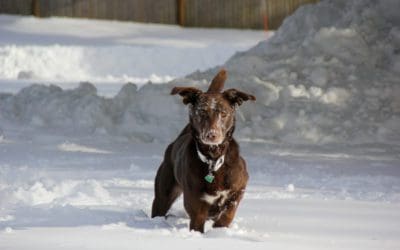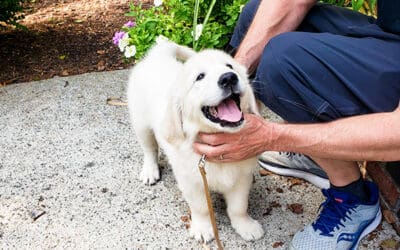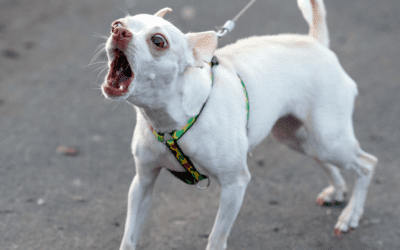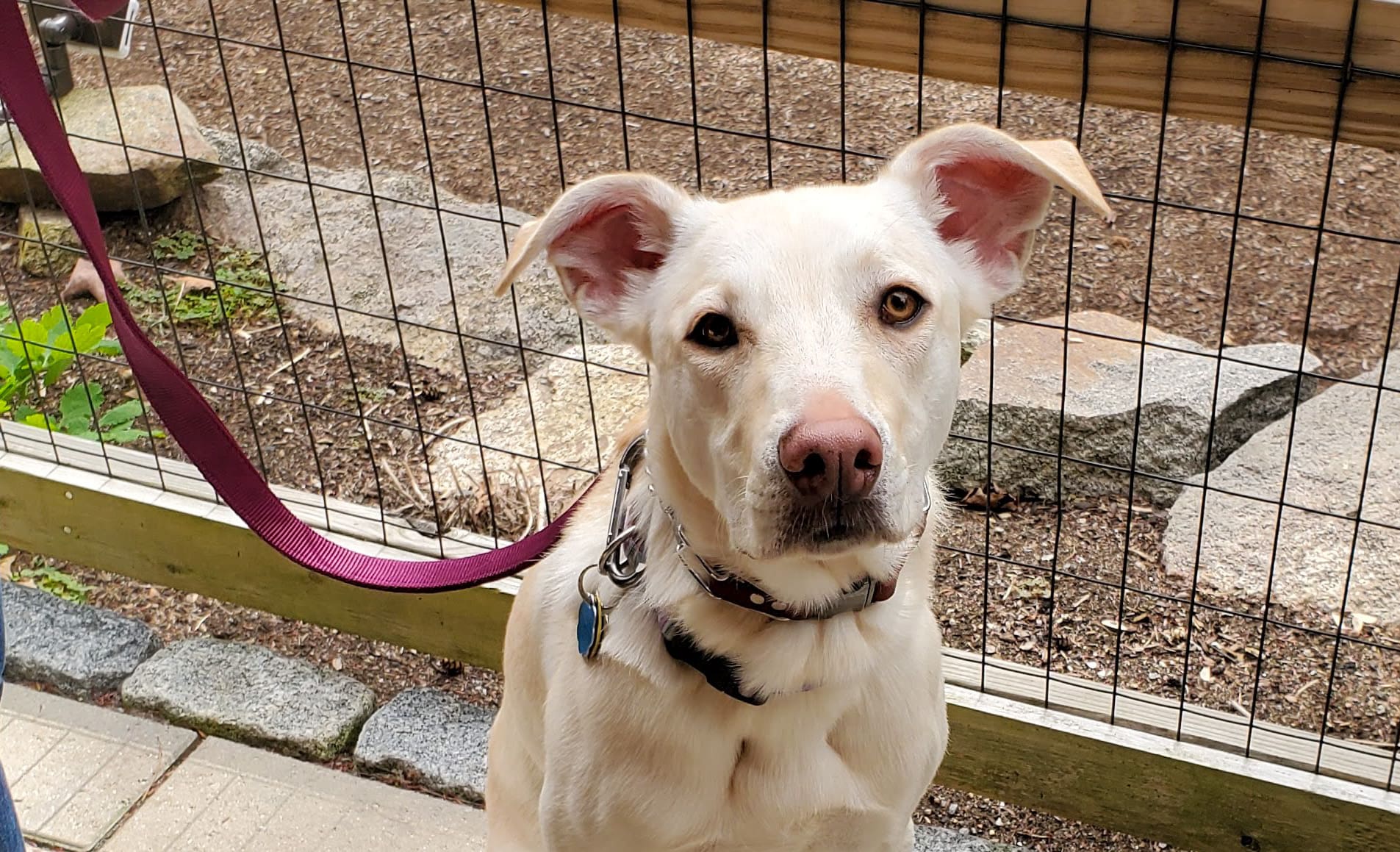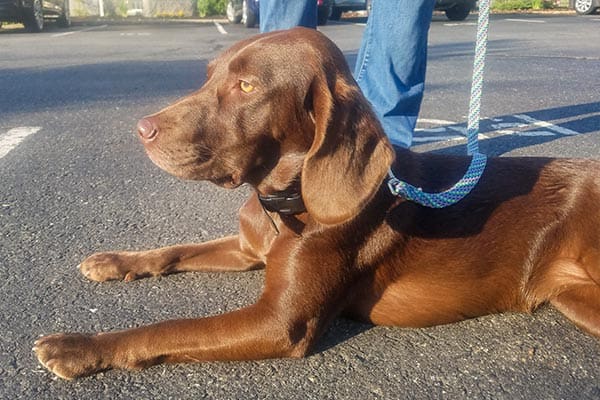You want a better-behaved dog, but where do you begin? Simple steps can help you start to change your relationship with your dog. While the following tips may not change or eliminate behaviors completely, starting on the basics will help if and when you decide to work...
Dog Coach Articles
How to Plan for Safety and Confidence with Your Dog
Planning for challenging, unsafe, or uncomfortable situations can help you better navigate life with your dog. Just like fire drills help us prepare for emergencies, understanding unsafe or stressful incidents with your dog is also helpful. You’ve thought through how...
Are You Accidentally Making Dog Training Harder? 6 Things to Avoid
Dog training can feel frustrating when progress is slow, but sometimes small things get in the way without us realizing it. A well-behaved dog starts with a calm state of mind. If your dog is too excited, nervous, or stuck in a “fight or flight” mode, they’re paying...
Your Leadership: The Essential Piece of Dog Training
What does your dog choose to do when you’re not giving a specific command? Bark at the window? Follow everyone around the house? Stay over-excited all day? Does he ignore you when you need him to pay attention? So what’s missing? When your dog respects your...
Reasons to Keep Puppy Walks Short
Running your puppy tired doesn't create a calm dog Young puppies don’t have the mental capacity for long walks There are more valuable ways to start your puppy toward being an awesome dog It is best to practice moderate expectations and incorporate short walks into...
Training Your Dog for the Vet
Your dog doesn’t have to love the vet, but she does need to be on good behavior. Vets work long hours to care for our beloved canines; we can help make their job a bit easier by training our dogs for the vet. Getting your dog ready for the vet also means training her...
Training Your Dog for the Groomer
Every dog will need grooming regardless of the breed and training is important to making that possible. Your goal is to start small, getting your puppy used to the motions and sensations of brushing, nail clipping, and even bathing. Through regular handling, slow...
Crate Training: Raising a Calm Puppy to be a Confident Dog
Raising a well-behaved dog starts by establishing a calm state of mind during puppyhood. Beginning with crate training your new pup will set your family up for long-term success. When you crate train your puppy, you teach them how to self-settle. This assigns your...
When Is the Best Time to Get a Second Dog? Expert Tips for a Smooth Transition
There are pros and cons of getting a second dog. Thinking through each point is essential before introducing another pup to your household. Here are some tips that will help you make the best decision.When is Right to Get a Second Dog? As dog trainers, we’re often...
Our Favorite Dog-Related Products
As dog trainers and owners, we have favorite dog-related products that make our lives easier and are well-made. Many are from smaller businesses and are also available locally. We love to support our local businesses year-round, but especially during the holiday...
Anticipate Excitement Level and Have a Well-Trained Dog
Learning to anticipate your dog's reactivity is key to stopping unwanted behaviors. It’s a process and takes time to learn to read your dog’s body language well. The better we get at reading their body language, the more efficiently and accurately we can set ...
Advocating for Your Dog is an Essential Role in Training
Having a well-behaved dog starts with your leadership. We talk a lot about leading your dog to make better choices, consistent boundaries, and assigning your dog a job. A key component to being a successful leader is advocacy. No matter who you’re leading, a team at...
Why Dog Training Tools Are Essential: Understanding the Prong Collar
Can a person be successful without using tools to change their dog’s behavior? Absolutely. But using these tools to train your dog speeds up the process and makes your consistent training effort very efficient. The use of training tools in our program can produce fast...
Teach Calmness Using a Schedule for Better Behavior
Setting and maintaining a schedule can help take the guesswork out of resolving bad behavior. No matter your dog’s age, more daily management of your dog is generally required to get different results. A Schedule for Calmness Setting and maintaining a schedule is...
Separation Anxiety: A Balanced Approach to Curing It Through Training
Separation anxiety in dogs can make your life, and your dog’s, much more challenging than it needs to be. The good news is that it is fixable and you can stop the barking, whining, chewing, digging, and pawing. Your leadership is the key ingredient to changing this...
When and Why To Keep a Leash on Your Dog in the House
Keeping a leash on your dog while inside your home is an easy and effective way to guide your dog’s behavior. Leashes are traditionally used on walks, outside of the house, but added training value can be found in using them inside. Many people seek out dog training...
Staying Safe While Walking Your Dog
Dogs can be a great source of companionship and a solid motivator for your exercise. But walking an untrained dog can be unpredictable and increase the risk of a fall. A recent study reports a sharp increase in injuries related to dog walking, with the most common...
“My Dog Won’t Stop Biting the Leash. How Do I Make It Stop!”
It’s typical and natural for a puppy or an untrained dog to put the leash in their mouth. It takes patience to work with your dog to make walks and daily life less frustrating and see them drop their leash. Here are points to remember as you start to convey better...
Question: “When can I stop using the crate or prong collar?”
A common question many owners have is: Will my dog always have to use a dog crate and prong collar? We always make the point that owners can choose when to stop using a crate or prong collar but that the choice is best made when there are no more behavior issues to...
What Does “Family-Centered” Mean?
You may have seen below our logo: “creating a family-centered canine life” – but what does that mean? Our dogs are truly a family member. Although we raise them differently than children, dogs learn and respond best to a sensitive and assertive approach that teaches...
Leading Our Dogs to Learn
Dogs have the capacity to change and grow faster than we give them credit for. We tend to sell them short concerning their capacity to improve how they behave. What is required is a basic level of leadership to lead them toward the things we wish them to do. When we...
Appreciating Your Commitment: Why Choose a Professional Dog Trainer
Working one-on-one with a trainer or coach is proven to give you better results–regardless of what you want to accomplish. Research done on career, fitness, and personal growth coaching can be applied to training your dog. In every case where you want more knowledge...
A Dog Training New Year’s Resolution?
As we look to the new year, it’s a great time to reflect and set dog training goals. Often personal health and wellness are at the top of the list for New Year’s resolutions. But how do our dogs figure into our resolutions?Wellness encompasses mind, body, and soul....
Tone of Voice as a Dog Training Tool
Dog Coach dog training is about changing your energy as a dog owner and handler. You want better behavior from your dog, you’re raising your expectations of your dog – and yourself. Something as small as changing your voice can change your energy and shift the way you...
Using the Place Command in Everyday Life
What is Place Command for Dogs Place is a command that tells your dog to go to a specific location and remain there until released. It can be a small rug, cot, dog bed, even a bath mat or towel. Place is a helpful command for getting your dog to settle and using it...
Short Dog Walks as a Balanced Training Tool
When most people think of a tired dog, they think of throwing the ball and running free or taking a long walk. Each of these has a place. The balanced dog training method that Dog Coach teaches owners uses short walks as an important training opportunity. A shorter...
A Calm State of Mind
When you want a better behaved dog, it all starts with establishing your dog’s calm state of mind. By focusing on training at home with lower distractions you teach your dog how to be calm. A calm dog doesn’t just naturally happen without your instruction. If your...
Crate Training a Dog
Full crate training a dog is teaching them to self-settle in their dog crate, with the door closed, whenever you place them in the crate for a nap or nighttime sleep. This approach yields the most benefits of crate training and contributes to better behavior outside...
Everyday Dog Training Opportunities
When you’re trying to train a better dog, every day is a good day to train your dog. Feeding morning breakfast, getting “dressed” with collars and leash, going out the door, and on your everyday walk, the opportunities can be significant.How do you identify training...
10 Things to Do Instead of Going to the Dog Park
While dog parks may seem like a good idea, they can compromise your dog’s calm, manageable state of mind and all the work you’ve done on training your dog. You can never be quite sure who is there and how other dogs will behave. Instead, opt for one of these choices...
Using Food to Train Your Dog: the Power of Mealtime
There’s no question that food can have a powerful effect on a dog. How you choose to incorporate food into relationship-based dog training actually matters. By using a dog’s natural food drive, you can impart lessons of leadership, calmness, impulse control, and...
Having a Well-Socialized Dog
Socialization of your dog is built on your human-canine relationship before it’s time for a fun canine-canine interaction. Leadership precedes socialization.Socialization of dogs goes beyond the simple concept of “mixing with others” and “let the dogs work it out.”...
What is a Structured Walk?
By using calm, confident leash control while walking your dog at your side, you are practicing a Structured Walk. It’s an exercise in communicating better behavior expectations for your dog. The Structured Walk is a fundamental component of Dog Coach training and...
Best Puppy Tips
Getting a new puppy is a big milestone. Whether you’re a seasoned dog owner or it’s your first dog, these puppy training tips will help get you started. The more time you put in with your puppy now, the quicker success you’ll have getting better behavior in the...
Navigating the Holidays with Your Dog
The winter holiday season can be a lot. From parties to shopping, winter sports or exams, we all have plenty to do. Here’s a list of Dog Coach tips to help you navigate the season, enjoy life with your dog, and generally remain sane! Whether you have a dog that’s young, reactive, or just needy, these tips will help you stay in control into the new year.
Housebreaking Your Dog
Housebreaking a dog can be a frustrating time but it is an essential lesson in how to train a puppy. It may seem like no matter what you do you cannot get your dog to “Go” outside and then end up cleaning up a mess or puddle in your home. This can drive you to...
Rough Dog Play
Healthy dog play can sometimes look rough and tumble and fierce and that isn’t necessarily a bad thing. But if you are concerned about it, your dog may indeed be playing too rough. Managing off-leash playtime with other dogs can be a real issue.Quick Tips for Rough...
Uncontrolled Barking
Uncontrolled barking can cause neighborhood headaches or even get you thrown out of your apartment. With their keen senses, dogs tune in to things we don’t always hear or see that can put them into serious barking mode. Leaving your dog at home or in your car (when...
Your Dog at the Front Door: What Happens When Guests Arrive?
You’ve taught your dog well. He usually behaves and responds to your commands when people come to your door. But just because your dog knows what to do it doesn’t mean your guests know what they need to do when arriving at your home.
Your Dog is Willing to Learn. Are You Ready to Teach?
It’s typical to ignore the true effect of our own actions. Whether we unintentionally offend a friend, buy the high-fat yummy choice at the market, or accept the offer to have one more beverage at the party, sometimes it’s tough to see what’s in our own best interest....
Now Offering Training in Somerville, Cambridge, Medford & Surrounding Area!
See the full list of areas served
North Shore MA In-Person Dog Training
Puppy Training
Team Puppy is for dogs ages 8-16 weeks. The program is 3 sessions, one-on-one and covers:
- Setting a feed and sleep schedule
- Crate training
- Potty training
- Controlling nipping, barking, and more
Foundation Training
Foundation training is a comprehensive approach to dog training. Whether you're looking for obedience training or behavior modification, Our results-driven dog training is a deep dive into how you and your family interact with your dog.
Basic challenges we address include:
- Leash reactivity
- Food and resource guarding
- Fear and separation anxiety
- Dog-to-dog aggression
- Socialization
- Basic dog obedience
Remote Collar Training
Remote collar training is for the dog that tends to make bad choices, is uncontrollable, does not listen to you, or is easily over-excited.
Remote collar training includes all the lessons of our Foundation Program with practice in:
- Sit, place (stay), heel, and down
- Off-leash recall
- Proper responses to excessive barking and resource guarding

